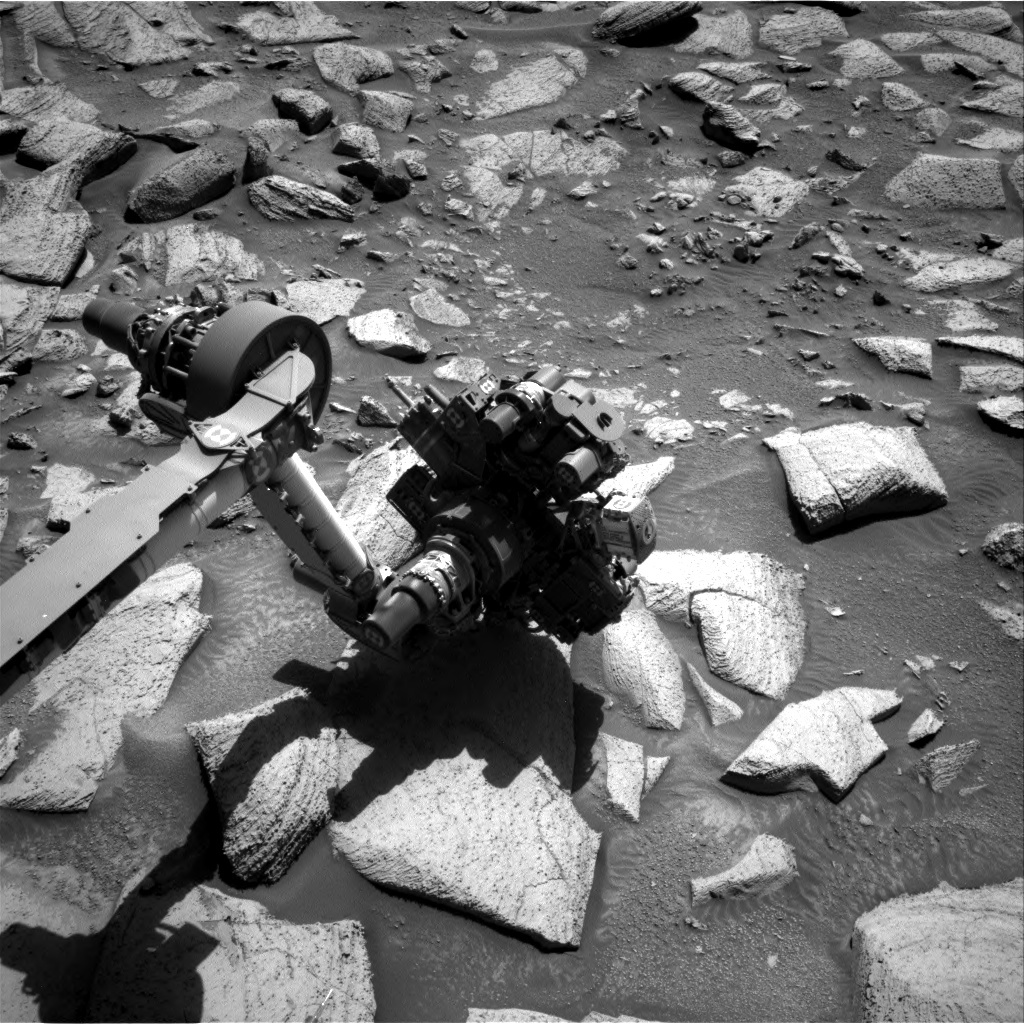Earth Planning Date: Friday, July 14, 2023
In human spaceflight, it's a tradition to wake the crew up with a "wake-up song" to let them know "Wake up, it's time to get to work!" For decades, this tradition has also been adopted by the Mars rover teams, with the tactical team at JPL choosing wake-up songs to play in the downlink room at the start of the planning day for us Earth-based "crew members." These songs are most helpful right after landing, when the team is living on "Mars time" and operating the rovers on Mars' 25-hour daily schedule. Scheduling shifts on a 25-hour timeline means we start work about an hour later every day, and this leads to some serious interplanetary jet lag! However, once rovers have been operating for a while and the team settles into a rhythm, most of the team members' schedules shift back to Earth-time, and we start planning two or even three sols (Martian days) at a time when Mars' and Earth's time zones don't quite match. The switch back to Earth time, and the fact that we've been operating for thousands of sols at this point, means we don't play wake-up songs every tactical shift anymore, although we haven't let the tradition slip entirely!
We did have a wake-up song today, and it was chosen by tactical downlink lead P.J. Rollins. His song choice? "It's Still Rock and Roll to Me" by Billy Joel. P.J. explained, "Touch and Go = Rock and Roll… Get it?"
Hahahahaha. Perfect. No notes.
We did indeed do a touch and go in Wednesday's plan, and at downlink we learned that both the touch (contact science on target 'Sounion') and go (a ~15 m drive) completed as planned. Hooray! In today's plan, we're going to do some more contact science on the rocks in our workspace, along with a ~27 m drive to the west. Before our drive, we'll collect MAHLI and APXS data from some dark, platy materials on a target named "Thermopylae," and do a DRT with MAHLI and APXS on a target named "Zachlorou." We'll also observe a small dark float rock in the workspace named "Megara" with Mastcam multispectral and ChemCam, and another portion of the bedrock in front of us with ChemCam on a target named "Salamina." SAM will collect data this weekend too, measuring the Martian atmosphere as part of a campaign to systematically monitor seasonal changes in its composition. Additional Mastcam and Navcam images for both geology and environmental science are also included in the plan, along with REMS, RAD, and DAN measurements. Other observations include a long distance image of Peace Vallis on the crater rim using ChemCam's RMI and a post-drive ChemCam AEGIS activity.
Written by Abigail Fraeman, Planetary Geologist at NASA's Jet Propulsion Laboratory
from NASA Mars Rover Curiosity: Mission Updates https://ift.tt/LrYeCiA

Comments
Post a Comment